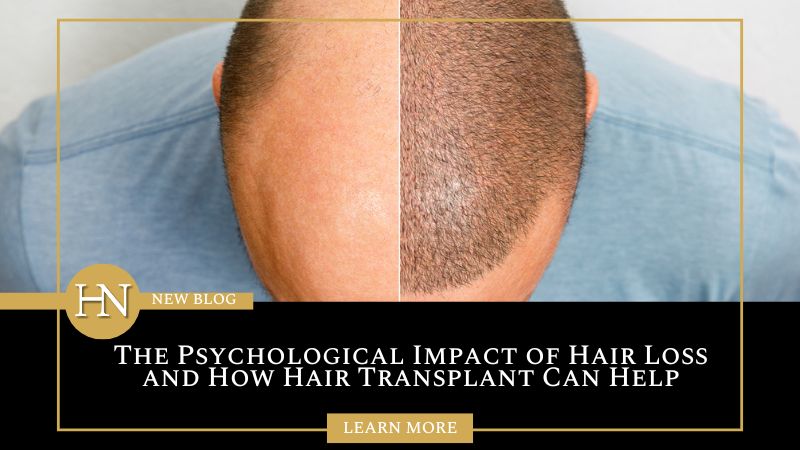4 Hair Transplant Myths Debunked

This article debunks common myths surrounding hair transplant procedures, providing evidence-based clarity on expectations. It addresses misconceptions such as the immediacy of results, the pain involved, the visibility of scarring, and the permanence of results. The piece highlights that full hair growth takes time to manifest, discomfort is minimal, modern techniques significantly reduce scarring, and the results of the transplanted hair are indeed long-lasting. By dispelling these myths, the article aims to reassure and inform individuals considering hair transplants, emphasizing advancements in technology and techniques that ensure effective and satisfying outcomes.
Hair transplants have emerged as a beacon of hope for many facing the challenges of hair loss, yet the procedure is shrouded in misconceptions and myths. From exaggerated promises of instant results to fears of unbearable pain and scarring, misinformation abounds. It's time to shed light on the reality of hair transplants, using evidence-based information to separate fact from fiction. This article aims to debunk common myths surrounding hair transplant procedures, providing clarity and reassurance to those contemplating this transformative journey.
Understanding the truths behind hair transplant procedures is crucial for individuals considering this option for hair restoration. Armed with accurate information, potential candidates can make informed decisions based on facts rather than fears, ensuring expectations are aligned with achievable outcomes.
1. Myth: Hair Transplants Provide Instant Results
Fact: Patience is Key to Seeing Full Results
One of the most pervasive myths is the expectation of immediate, full-head hair growth following a transplant. In reality, the process of hair growth after a transplant is gradual. Initially, transplanted hair falls out, making way for new growth, which typically begins to visibly improve around three to four months post-procedure, with the most significant results observable after 9 to 12 months. Understanding this timeline is crucial in setting realistic expectations and ensuring patient satisfaction.
2. Myth: Hair Transplants are Extremely Painful
Fact: Discomfort is Minimal and Manageable
Modern hair transplant techniques, such as FUE (Follicular Unit Extraction) and FUT (Follicular Unit Transplantation), are performed under local anesthesia. This significantly minimizes pain during the procedure. Post-operative discomfort is generally mild and can be effectively managed with prescribed pain relievers. Most patients report that the procedure is far less painful than anticipated, with many able to return to normal activities within a few days.
3. Myth: Hair Transplants Leave Obvious Scarring
Fact: Advanced Techniques Minimize Scarring
The fear of noticeable scarring often deters individuals from pursuing hair transplants. However, advances in technology have significantly reduced this risk. FUE, for instance, involves extracting individual hair follicles, leaving behind only tiny, dot-like scars that are hardly visible once healed. Even FUT, known for leaving a linear scar, has seen improvements in suturing techniques that make scars less conspicuous. Choosing a skilled surgeon is key to minimizing and effectively managing scarring.
4. Myth: Hair Transplant Results Don’t Last
Fact: Transplanted Hair Grows for a Lifetime
A common misconception is that hair transplant results are temporary. In truth, hair transplants yield long-lasting results. The procedure involves transplanting hair from the donor area, typically the back of the head, to the thinning or balding areas. Hair in the donor area is genetically resistant to balding, meaning the transplanted hair will continue to grow for a lifetime in its new location. While the procedure doesn’t prevent future hair loss in untreated areas, the results of the transplanted hair are permanent.
Hair transplants have come a long way in offering a viable, effective solution for hair restoration. Yet, myths and misconceptions can cloud judgment and deter individuals from pursuing this life-changing procedure. By debunking these myths with evidence-based facts, potential candidates can approach their hair restoration journey with confidence and realistic expectations. Understanding that results require patience, discomfort is minimal and manageable, scarring can be effectively minimized, and the outcomes are long-lasting, individuals can make informed decisions about whether a hair transplant is the right choice for them. With advancements in techniques and technology, hair transplants continue to provide hope and renewed self-esteem to many, proving that fact triumphs over fiction in the quest for hair restoration.
Written on behalf of HairNation.
FAQs
No, visible improvements start around 3-4 months, with significant results after 9-12 months.
Most patients can resume daily activities within a few days post-procedure.
The procedure is performed under local anesthesia, minimizing pain. Any post-operative discomfort is typically mild.
Restorative Hair Transformation Starts Here
Hair loss is not something you have to accept. Effective and lasting solutions for hair loss for men and women are available. Through a comprehensive consultation, HairNation delivers accurate and insightful diagnosis and advanced hair restoration treatment strategies to guide you on your journey to complete and transformative hair restoration.
Contact us today by filling out the contact form below or by calling us at 1 (587) 952-8844. Complimentary virtual consultations are available for those inquiring about hair transplants, and for all other hair loss inquiries, complimentary in-person consultations are available.


